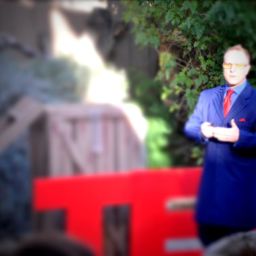
I recently relearned a lesson I find myself teaching quite often. It was humbling. It was an excellent reminder. And, it brought me back in touch with something I want to share with you.
I had the privilege to support and train Navy Explosive Ordnance Disposal (EOD) Group One at Naval Amphibious Base (NAB) Coronado in San Diego. They asked me to share the principles of Leadership & Communication that I’ve been honing over the past 10 years. It was definitely a bucket list kind of gig since I grew up in the Marine Corp and have tremendous respect for Navy Special Operations. Explosive Ordnance Disposal teams go in before the Navy Seals and make sure they don’t get blown up. They also have a much broader range of responsibilities than I realized, basically encompassing anything that has the potential to go “boom.” Communication is crucial. They need to work with each other and colleagues from other areas of the military. Often they also need to work with both the militaries and civilians of whatever country in which they are operating that day. And, these situations very often involve tight time frames, lots of distractions, and just about anything else you can imagine that makes clear communications difficult.
I Was Nervous!
And, leading up to that engagement I was definitely far more nervous, I mean excited… than usual. It was a real opportunity for me to go off the rails with self-doubt, because so much of what I talk about and demonstrate and bring in this work is based in emotions, emotional intelligence, authenticity, and vulnerability. And, of course, for weeks leading up to the training, my monkey mind was shrieking. “They’re going to hate this stuff!” “They’re gonna think you’re weak, you’re soft, you’re feeble!” “They’re going to laugh you out of the room!”
And, I caught myself contemplating, many times, what I could do differently to avoid that kind of potential embarrassment. “I have to be tougher than usual,” I would think, “I can’t go in and be all touchy-feely emotional with these guys, they’ll chew me up and spit me out!” But, I kept reminding myself they didn’t hire me to do something I don’t usually do… They wanted me to bring what I bring to places like Johnson & Johnson and NASA and Boston Scientific. When scientists and engineers and people with the hard skills find out that I’m going to be talking about things like storytelling and vulnerability and connection they often start out skeptical, to say the least. But, because they’re willing to listen and because it’s all based in science they come around quickly. I reminded myself I just have to trust that they’re smart and they’ll listen.
And, it was tough not to just give in and try to take everything like might be perceived as touchy-feely out of my training, but in the end, I didn’t. I showed up and I trusted that I could deliver and that they would give me a chance and it worked out. It actually surprised me because so many of the men and women of Group One told me how much they appreciated it. Someone even said, “John, the military needs much more of this…”
The Broader Lesson.
And, here’s the broader lesson, I think… For me, and hopefully for you, too… Human beings respond to authenticity, vulnerability, and meaningful stories told with an intention and a useful point. And, yes! It’s scary to do that. Especially when what we see modeled almost everywhere is the exact opposite of that. Yes, there’s such a thing as oversharing, but that’s almost never the problem. Most often it seems people draw a big line between their work and their personal life; don’t want to exhibit any emotions, don’t want to connect personally with their colleagues, keep their passions to themselves, and then we wonder why our workforce is so wildly disengaged and unhappy.
Well, I’ve come to see, over and over again, that the truly effective leaders aren’t like that. Sure they can be strong when they need to be. But, they can also share themselves. Effective leaders tell meaningful personal stories with the intention of illustrating important points, or values, or lessons. They share their failures and what they learned from them. They cop to their insecurities and invite others to do the same.
Take a Risk and be Human.
So, the next time you notice you’re nervous about appearing vulnerable, or in sharing a failure and what you learned, or telling a personal story about something that mattered to you I encourage you to take a deep breath and go for it. Have your fear and then just do it anyway! That’s real courage. Your team will appreciate you for it. You’ll demonstrate that it’s safe for them to do the same. And, I bet you’ll be re-inspired, on a whole new level, by yourself and the people who surround you as you give your all to what you’re creating in the world.
Seeing This in Action.
For an insight into the difference between how being vulnerable feels, vs. how it is for others I recommend you watch Brené Brown’s two TED Talks in order. The Power of Vulnerability and Listening to Shame. Notice what the first talk is like for you, as a listener. Then, listen to what she says at the beginning of her second talk about the first talk. It’s funny and it’s very instructive.
Note for men, in particular: BTW, Brené picks something up about her subject, as it relates to men (bell curve, etc.), in the second talk. So, if the first talk leaves you wanting, especially if you’re a man, make sure you watch the second talk, too.
Check out Powerful Virtual Leadership with John Bates










